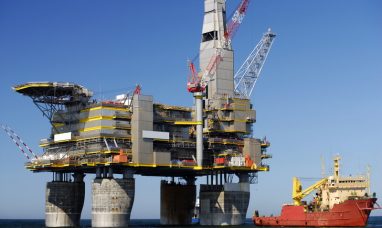OTTAWA, ON, July 2, 2024 /CNW/ – From coast to coast to coast, Canadians are saving thousands of dollars a year on gas by rapidly making the switch to electric vehicles, with over 320,000 new electric vehicles registered in 2023 alone. The Government of Canada is taking action to make it more affordable for Canadians to purchase, charge and drive electric vehicles (EVs) across the country while driving toward a net-zero future, including by making it easier to access public EV charging through historic direct investments, research and partnerships with the private sector and other levels of government.
Funding and Request for Proposals
To advance these efforts, today, the Honourable Jonathan Wilkinson, Minister of Energy and Natural Resources, launched a new request for proposals (RFP) under the Zero Emission Vehicle Infrastructure Program (ZEVIP). The RFP will support the deployment of EV chargers, including fast chargers, in public places across Canada such as highways and public lots. The RFP will also support the deployment of chargers at private locations, including multi-unit residential buildings, workplaces and where on-road vehicle fleets are serviced. Applications will be accepted until September 19, 2024.
This funding will deploy thousands of new chargers across Canada, building on the Government of Canada’s progress to deploy 84,500 EV chargers across Canada, including through ZEVIP, the Canada Infrastructure Bank (CIB)’s Charging and Hydrogen Refuelling Infrastructure Initiative, and incentive credits under both the Electric Vehicle Availability Standard and the Clean Fuel Regulations.
In addition to investments by provinces, territories, municipalities and the private sector, the federal government has supported approximately 20% of the nearly 30,000 public chargers that are operating in Canada. As a result, there were 70 percent more EV chargers in Canada in 2023 than in 2022, with thousands more on the way each year.
Supporting Deployment Through Tools and Research
Today, Natural Resources Canada released Electric Vehicle Charging Infrastructure for Canada: Updated forecasts of vehicle charging needs, grid impacts and cost for all vehicle segments (2024 EV Charging Needs Report).The independently produced report assesses the country’s charging landscape, guides decision-making and informs investment needs, including by provinces, territories, municipal governments and the private sector.
The 2024 EV Charging Needs Report provides a detailed regional analysis of public and private charging needs for both light-duty vehicles and medium- and heavy-duty vehicles, together with related grid readiness requirements and investments. The report highlights that a coordinated effort is needed from all levels of government, industry, utilities and other private-sector stakeholders to continue to accelerate deployment.
Additionally, to help investors, stakeholders, provinces, territories and communities determine the most suitable locations for chargers, the Government of Canada has developed the National Public EV Charging Planning Map.
These evidence-based tools will support the deployment of chargers in the areas with the greatest public charging need, including along routes, highways and communities.
Canadians are making the switch to electric vehicles, reducing their energy costs while driving down emissions. The Government of Canada will continue to support them in accelerating toward a prosperous, net-zero future, including by ensuring all new passenger vehicles sold in Canada are zero-emission by 2035; by supporting the deployment of public charging stations across the country; and by building out a Canadian-made electric vehicle supply chain that creates sustainable, good-paying jobs for Canadian workers.
Quotes
“Canadians are making the switch to EVs because it’s a great way to save money while ensuring clean air in our communities and fighting climate change. We’re making electric vehicles more affordable and charging more available where Canadians live, work, travel and play. Today, we launched another funding request for proposals via the Zero Emission Vehicle Infrastructure Program, which will help deploy thousands more chargers across Canada. This will put more Canadians in the driver’s seat on the road to a prosperous net-zero future.”
The Honourable Jonathan Wilkinson
Minister of Energy and Natural Resources
“Hundreds of thousands of Canadians are making the switch to an EV every year. They expect access to convenient, affordable and reliable charging — including in public spaces. Today’s call for proposals does that by investing in thousands more chargers and equipping the private sector and governments with the tools they need to deploy more chargers, faster.”
Julie Dabrusin
Parliamentary Secretary to the Minister of Energy and Natural Resources and
to the Minister of Environment and Climate Change
Quick Facts
- The federal government’s investment in EV charging infrastructure is supporting Canadians by reducing barriers to EV adoption while spurring investment and growth across Canada’s EV supply chain, including through Transport Canada’s Incentives for Zero-Emission Vehicles Program (iZEV), which makes zero-emission vehicles more affordable for Canadians and has received another $1.7 billion in Budget 2022; and,
- Budget 2024 announces the government’s intention to introduce a new 10-percent Electric Vehicle Supply Chain investment tax credit on the cost of buildings used in key segments of the electric vehicle supply chain for businesses that invest in Canada across three supply chain segments:
- electric vehicle assembly;
- electric vehicle battery production; and,
- cathode active material production.
- The Strategic Innovation Fund (SIF) has made significant strides in the automotive and battery sector in recent years. Since 2017, the Fund has announced over $5.5 billion in funding toward the automotive and battery sector, of which approximately $5.3 billion has been directly in support of the EV transition.
- These investments include projects focused on producing battery materials, battery components and packs and on manufacturing EVs and developing vehicle components specific to low-carbon transportation (e.g., next-generation tires).
- Investing $3.8 billion in the mining, processing and recycling of critical minerals,
- Budget 2024 announces the government’s intention to introduce a new 10-percent Electric Vehicle Supply Chain investment tax credit on the cost of buildings used in key segments of the electric vehicle supply chain for businesses that invest in Canada across three supply chain segments:
- Since 2016, the Government of Canada has allocated over $1.2 billion in funding to support the deployment of electric vehicle charging stations across the country.
- Since 2019, a total of over 40,000 EV chargers (Level 2 and Level 3) have been supported by ZEVIP.
- The 2024 EV Charging Needs Report provides an update to a 2022 NRCan-commissioned study, Updated Projections of Canada’s Public Charging Infrastructure Needs, based on changing trends in the EV market, charger utilization and assessment methodologies.
- As noted in the report, “The results are intended to support the Government of Canada — as well as provincial and municipal governments, utilities and other stakeholders — in planning to ensure that sufficient charging infrastructure will be deployed to support Canada’s targets”
- As of May 2024, NRCan’s infrastructure programs and the Canadian Infrastructure Bank’s Charging and Hydrogen Refueling Infrastructure Initiative had already committed funds for the installation of over 46,000 chargers across the country, with more than 14,000 of these federally funded chargers already in operation.
- EV charger deployment has seen significant growth: an average of 45 percent annually since 2016 and a jump to 72-percent growth between 2022 and 2023.
- With Budget 2023, the Government of Canada has now committed more than $40 billion to support Canada’s clean electricity sector, including related grid updates for EV charging infrastructure.
- This significant investment is building an EV charging network for Canadians, and we continue to work with all levels of government, industry, utilities and other private sector stakeholders to further accelerate deployment.
Related Information
- Zero-Emission Vehicle Infrastructure Program
- The Canadian Infrastructure Bank (CIB) Charging and Hydrogen Refuelling Infrastructure Initiative (CHRII)
- 2030 Emissions Reduction Plan: Clean Air, Strong Economy
- Electric Charging and Alternative Fuelling Stations Locator
- Zero-emission vehicles: Incentives
- Building a green economy: Government of Canada to require 100% of car and passenger truck sales be zero-emission by 2035 in Canada
Follow us on LinkedIn
SOURCE Natural Resources Canada

Featured image: Depositphotos © Eyeidea









